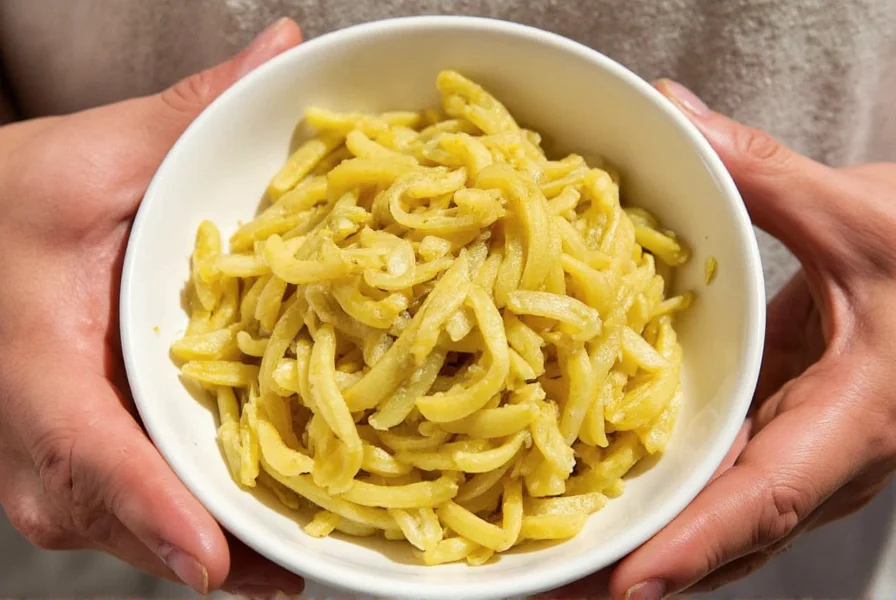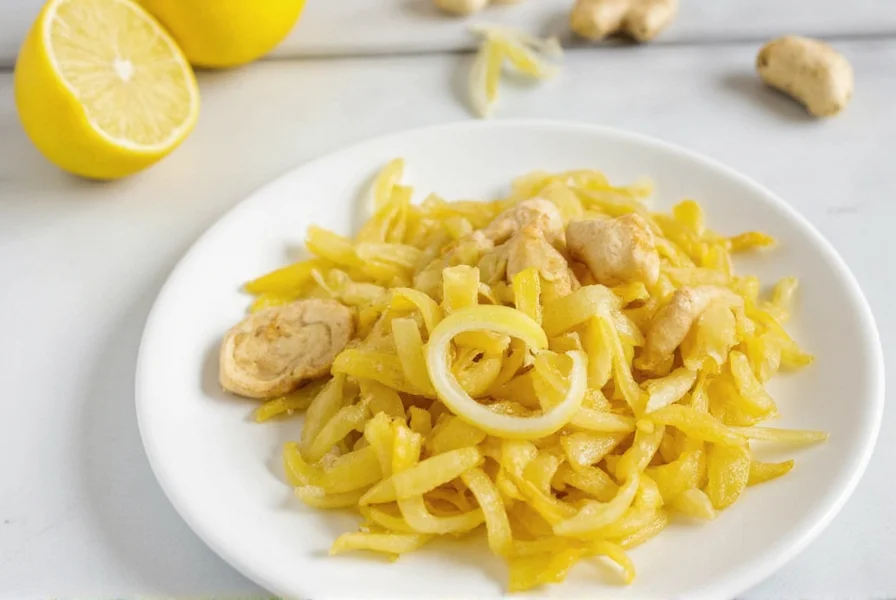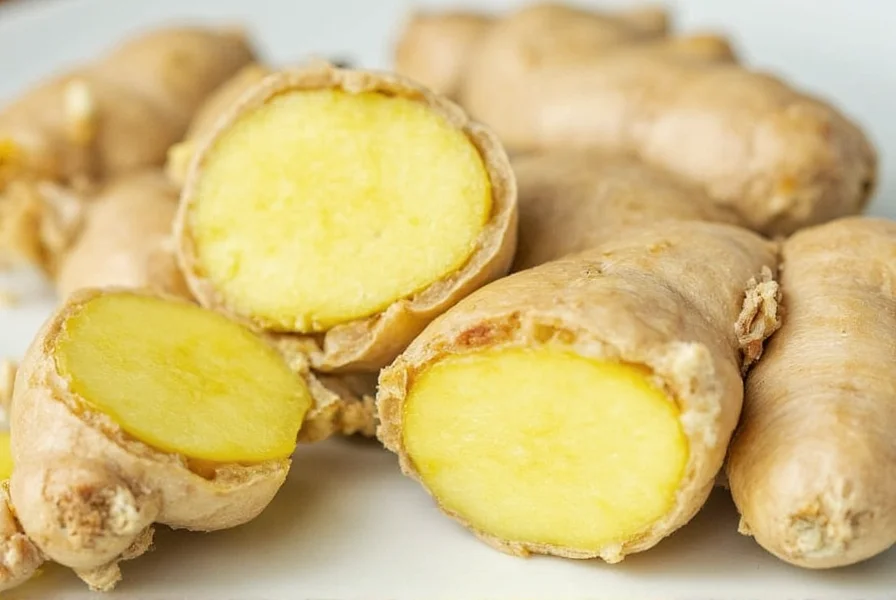Ginger isn't just a spice—it's a flavor powerhouse that transforms dishes from ordinary to extraordinary. Understanding proper ginger preparation techniques makes the difference between a dish with subtle warmth and one with harsh, overwhelming heat. Whether you're crafting an Asian stir-fry, baking ginger cookies, or brewing medicinal tea, mastering ginger cooking methods elevates your culinary results significantly.
Selecting and Storing Fresh Ginger
Choose firm ginger roots with smooth, tight skin and no wrinkles or soft spots. The best pieces feel heavy for their size with minimal branching. Avoid roots with mold or dried-out ends. Store unpeeled ginger in the refrigerator's crisper drawer inside a paper bag for up to three weeks, or freeze whole pieces for six months. Frozen ginger actually becomes easier to grate without peeling.
| Ginger Type | Best Cooking Method | Flavor Profile | Recommended Use |
|---|---|---|---|
| Fresh young ginger | Sautéing, pickling | Mild, juicy, less fibrous | Salads, delicate sauces |
| Mature ginger | Boiling, roasting | Stronger, spicier, more fibrous | Curries, baked goods, teas |
| Dried ginger powder | Dry heat applications | Concentrated, earthy | Spice rubs, baked goods |
Essential Ginger Preparation Techniques
Peeling ginger with a spoon beats using a vegetable peeler—simply scrape the edge of a teaspoon against the skin to remove it with minimal flesh loss. For slicing, cut thin coins across the fiber direction, then stack and slice into matchsticks. Mincing requires rocking your knife repeatedly over the matchsticks. Grating works well for frozen ginger, yielding fine particles that distribute evenly through dishes.

Mastering Ginger Cooking Methods
Sautéing Ginger Properly
Sautéing unlocks ginger's aromatic compounds without burning its delicate sugars. Heat 1-2 tablespoons of neutral oil in a skillet over medium heat. Add sliced or minced ginger and cook for 60-90 seconds, stirring constantly. Properly sautéed ginger becomes fragrant but remains pale yellow—browning creates bitterness. This technique works perfectly for stir-fries and sauce bases. For Thai curries, combine sautéed ginger with lemongrass and galangal for authentic flavor layers.
Boiling Ginger for Maximum Benefits
Boiling ginger creates a soothing base for teas and broths while preserving its medicinal compounds. Slice 1-inch pieces thinly and add to cold water, then bring to a gentle simmer. Cook for 10-15 minutes for standard tea strength, or up to 30 minutes for more intense flavor. Adding lemon juice after boiling enhances gingerol extraction. For immune-boosting drinks, include a cinnamon stick and honey after removing from heat.
Roasting Whole Ginger
Roasting transforms ginger's sharp heat into complex sweetness. Leave the skin on, slice a 3-inch knob into 1/2-inch thick pieces, and toss with olive oil, salt, and pepper. Roast at 375°F (190°C) for 20-25 minutes until tender and caramelized at the edges. This method works beautifully with root vegetable medleys or as a side dish. The Maillard reaction during roasting develops new flavor compounds that raw ginger lacks.

Timing Matters: When to Add Ginger During Cooking
The moment you introduce ginger dramatically affects your dish's flavor profile. Add it early in the cooking process for deeper, more integrated warmth that permeates the entire dish. Introduce it during the last 5-10 minutes for brighter, more pronounced ginger notes. For soups and stews, add half at the beginning and half near the end to create flavor dimension. In baking, incorporate ground ginger early to allow its flavors to meld with other ingredients.
Perfect Ginger Pairings
Ginger harmonizes beautifully with specific ingredients to create balanced flavor experiences. Pair it with garlic and scallions for Asian cuisine foundations, combine with citrus for refreshing beverages, or match with warm spices like cinnamon and cardamom in baked goods. For savory applications, ginger complements soy sauce, sesame oil, and chili peppers. In sweet preparations, it enhances molasses, honey, and stone fruits like peaches and apricots.
Common Ginger Cooking Mistakes to Avoid
Many home cooks make these critical ginger errors: burning it during sautéing (cook over medium, not high heat), using insufficient quantity (1 tablespoon minced ginger per serving is standard), or adding it too late in long-cooking dishes. Never substitute ground ginger for fresh in equal amounts—use 1/4 teaspoon powder for each tablespoon of fresh. Avoid soaking ginger in water before cooking, which leaches flavor compounds. Most importantly, don't discard ginger scraps—freeze them for future stocks and broths.
Simple Ginger Recipe Applications
Apply these techniques immediately with these straightforward applications: Create ginger-infused oil by gently heating minced ginger in neutral oil for 10 minutes, then straining. Make quick-pickled ginger by simmering thin slices in equal parts rice vinegar and sugar for 5 minutes. For an instant flavor boost, add a teaspoon of grated ginger to vinaigrettes or smoothies. When baking, replace 1/4 of the liquid in cake recipes with strong ginger tea for subtle warmth.
Frequently Asked Questions
What's the best way to peel ginger without wasting flesh?
Use a spoon to scrape off ginger skin. The spoon's edge fits ginger's curves perfectly, removing only the thin outer layer while preserving maximum flesh. This method wastes 30% less ginger than using a vegetable peeler and works especially well on knobby pieces.
How long should I cook ginger to reduce its spiciness?
Cook ginger for at least 10 minutes to mellow its sharp heat. Longer cooking times (15-20 minutes) transform gingerol compounds into zingerone, which has a sweeter, less pungent flavor. For significantly reduced spiciness, simmer ginger for 30 minutes or roast it in the oven at 375°F for 25 minutes.
Can I substitute dried ginger for fresh in recipes?
Yes, but use 1/4 teaspoon of ground ginger for every tablespoon of fresh ginger called for in recipes. Dried ginger has more concentrated flavor but lacks the bright, citrusy notes of fresh ginger. It works best in baked goods and spice blends rather than dishes where fresh ginger's texture matters.
When should I add ginger to stir-fries for best results?
Add minced ginger to hot oil immediately after aromatics like garlic, cooking for 30-60 seconds until fragrant before adding other ingredients. This brief cooking time preserves ginger's bright flavor while removing raw harshness. For deeper flavor integration, add half at the beginning and half during the last two minutes of cooking.











 浙公网安备
33010002000092号
浙公网安备
33010002000092号 浙B2-20120091-4
浙B2-20120091-4